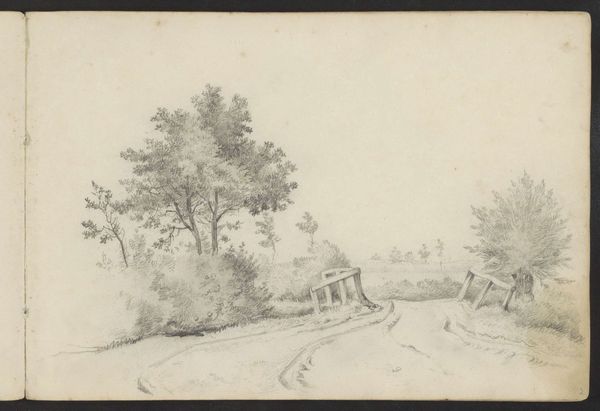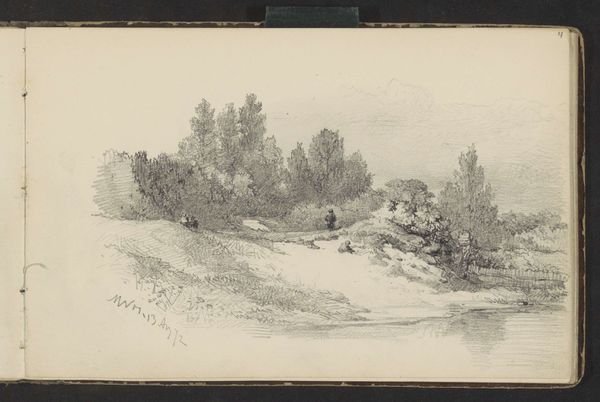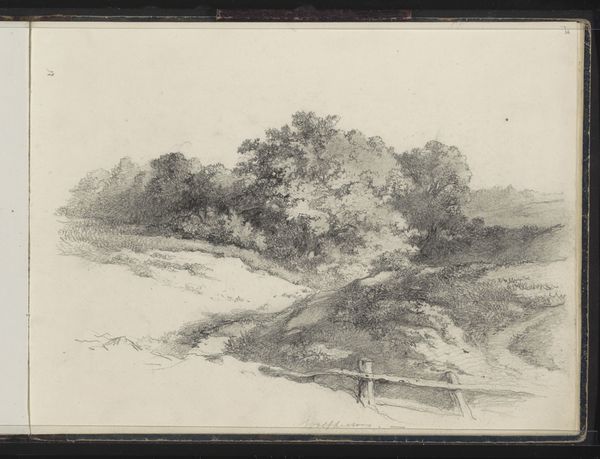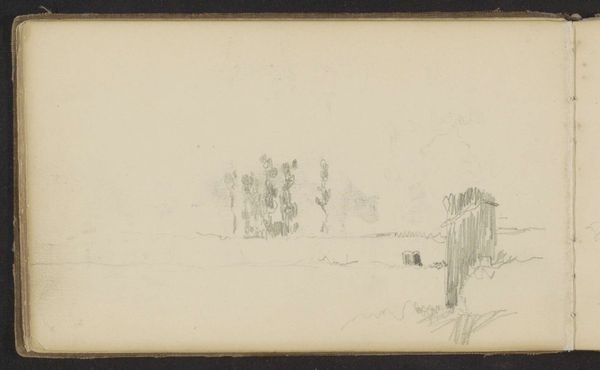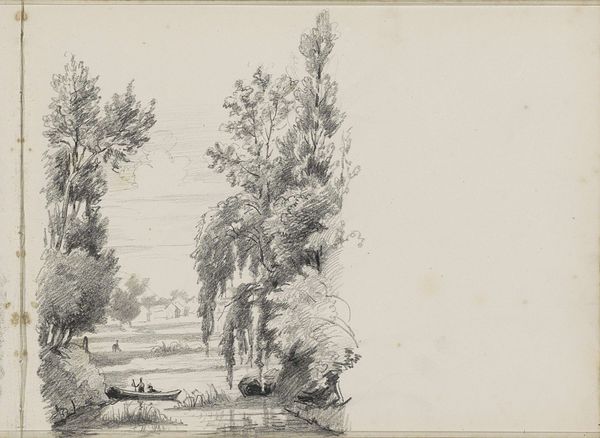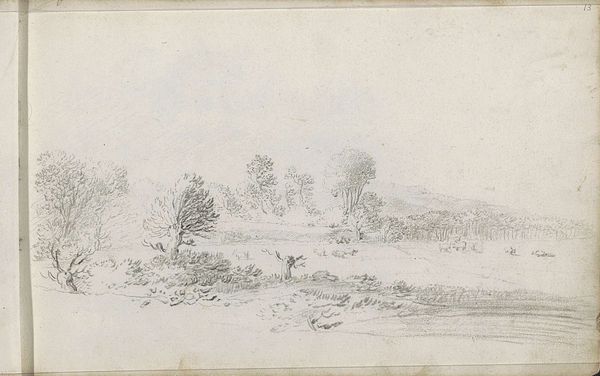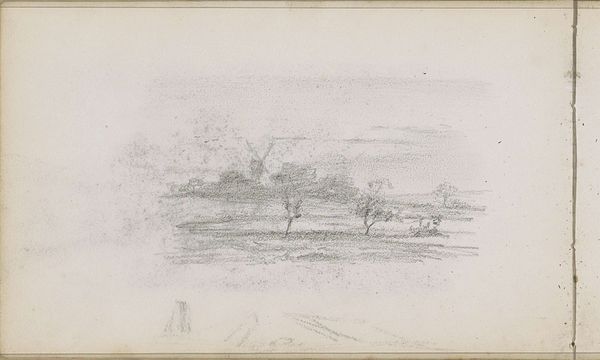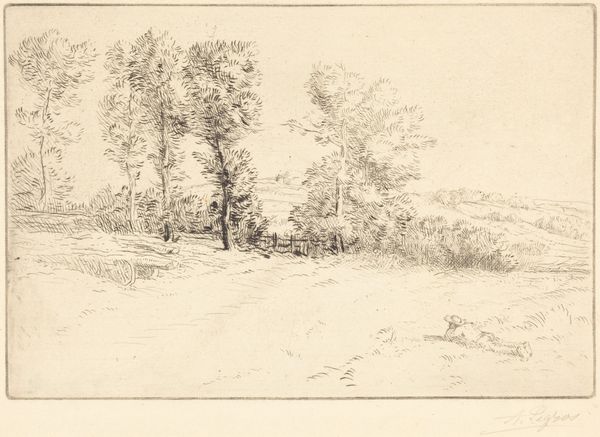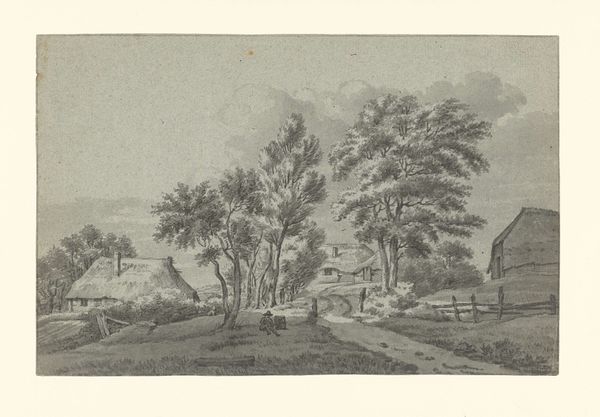
Copyright: Rijks Museum: Open Domain
Curator: It evokes a sense of quiet labor and a close connection to the land. Editor: Indeed. We are looking at "Landweg tussen Kleef en Berg en Dal," a pencil drawing made by Johannes Tavenraat between 1861 and 1867. It's part of the Rijksmuseum's collection. Curator: Pencil is such an accessible, direct medium, isn’t it? Here, Tavenraat’s use of it suggests a quick study, capturing a moment in the daily life of the people, perhaps made *en plein air*. I'm interested in how the physical labor of hauling a heavy load becomes the central theme. It certainly isn't just pretty scenery. Editor: It definitely speaks to the role of art within nineteenth-century Dutch society. We're not seeing heroic history painting here. Tavenraat seems to be deliberately engaging with the rise of Realism. Look at the very unglamorous rendering of the figures and the labor they perform. Curator: It feels very grounded. The sketch’s composition and muted tones give you a sense of place – of feeling the weight of that bundle the workers are pulling. And while the road visually leads us in, those workers, their material struggle, is clearly the focal point. What's interesting too, is how this scene is documented; it is dated with a location: Kleve, 1 July '61 and further dated to the 9th of July ‘61 Editor: This close observation and clear rendering of laborers emphasizes an empathetic view of working-class existence which certainly contrasts with other approaches in fine art from the era. The sketch format, while intimate, opens questions around art production and the consumption of imagery for social change. How was the image itself circulated, displayed, and reproduced? Curator: You're right. It prompts us to think about who had access to this imagery. Was it intended for the public? For an individual patron? How did it influence broader social perceptions? The paper itself, its cost, and its availability shape the narratives, too. Editor: Examining its place within collections like the Rijksmuseum asks further questions. How has its meaning shifted, viewed within a national art historical framework rather than its original local context? Curator: Food for thought. For me, this image remains a stark but evocative representation of manual labor. Editor: And a prompt to consider how artistic choices can both reflect and influence social attitudes toward labor and landscape.
Comments
No comments
Be the first to comment and join the conversation on the ultimate creative platform.
